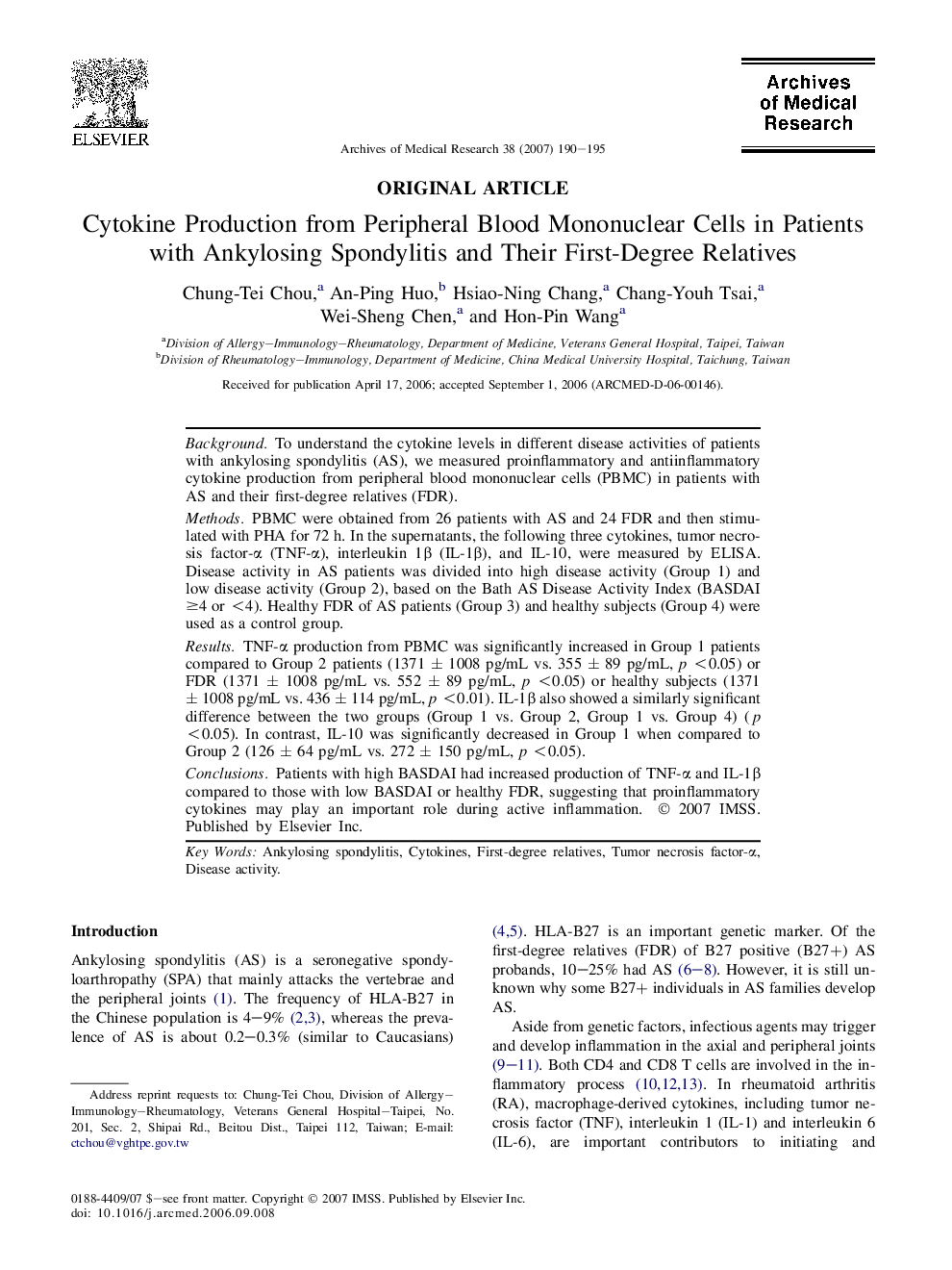| Article ID | Journal | Published Year | Pages | File Type |
|---|---|---|---|---|
| 3447456 | Archives of Medical Research | 2007 | 6 Pages |
BackgroundTo understand the cytokine levels in different disease activities of patients with ankylosing spondylitis (AS), we measured proinflammatory and antiinflammatory cytokine production from peripheral blood mononuclear cells (PBMC) in patients with AS and their first-degree relatives (FDR).MethodsPBMC were obtained from 26 patients with AS and 24 FDR and then stimulated with PHA for 72 h. In the supernatants, the following three cytokines, tumor necrosis factor-α (TNF-α), interleukin 1β (IL-1β), and IL-10, were measured by ELISA. Disease activity in AS patients was divided into high disease activity (Group 1) and low disease activity (Group 2), based on the Bath AS Disease Activity Index (BASDAI ≥4 or <4). Healthy FDR of AS patients (Group 3) and healthy subjects (Group 4) were used as a control group.ResultsTNF-α production from PBMC was significantly increased in Group 1 patients compared to Group 2 patients (1371 ± 1008 pg/mL vs. 355 ± 89 pg/mL, p <0.05) or FDR (1371 ± 1008 pg/mL vs. 552 ± 89 pg/mL, p <0.05) or healthy subjects (1371 ± 1008 pg/mL vs. 436 ± 114 pg/mL, p <0.01). IL-1β also showed a similarly significant difference between the two groups (Group 1 vs. Group 2, Group 1 vs. Group 4) (p <0.05). In contrast, IL-10 was significantly decreased in Group 1 when compared to Group 2 (126 ± 64 pg/mL vs. 272 ± 150 pg/mL, p <0.05).ConclusionsPatients with high BASDAI had increased production of TNF-α and IL-1β compared to those with low BASDAI or healthy FDR, suggesting that proinflammatory cytokines may play an important role during active inflammation.
